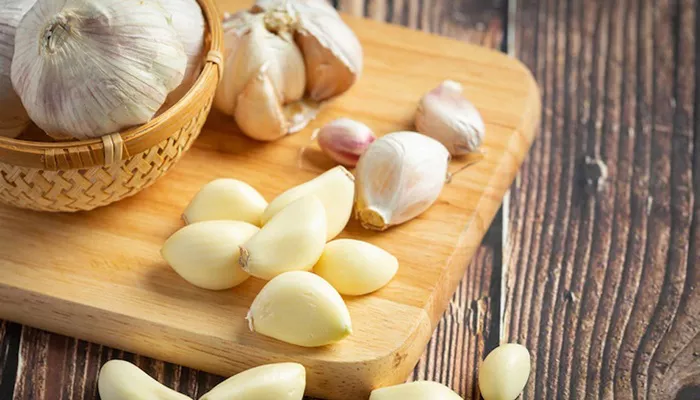Garlic has long been revered for its medicinal properties, dating back to ancient civilizations. In modern times, it’s often touted as a natural remedy for various ailments, including high blood pressure. But how effective is raw garlic in managing hypertension? This article explores the potential benefits of raw garlic for lowering blood pressure and provides insights for patients, especially those with dental concerns.
The Role of Diet in Blood Pressure Management
Diet plays a crucial role in managing blood pressure. Sodium intake, potassium levels, and the consumption of certain foods can significantly impact blood pressure. Among the many dietary elements that have gained attention for their potential benefits is garlic, specifically raw garlic.
The Science Behind Garlic’s Blood Pressure-Lowering Properties
Garlic is rich in compounds that have been shown to have various health benefits. The most notable of these is allicin, a sulfur compound produced when garlic is crushed or chopped. Allicin is believed to be responsible for many of garlic’s therapeutic effects, including its potential to lower blood pressure.
Several studies have investigated the effects of garlic on blood pressure. A meta-analysis of clinical trials found that garlic supplementation could reduce systolic blood pressure by an average of 7-16 mmHg and diastolic blood pressure by 5-9 mmHg in hypertensive individuals. These findings suggest that garlic, particularly in raw form, may be an effective adjunct therapy for managing high blood pressure.
see also: How Hypertension Causes Myocardial Infarction
How Does Raw Garlic Lower Blood Pressure?
Garlic’s ability to lower blood pressure is thought to be due to several mechanisms:
Vasodilation: Garlic has been shown to enhance the production of nitric oxide, a molecule that helps relax blood vessels.
This vasodilation effect can lead to lower blood pressure by reducing the resistance the heart has to pump against.
Antioxidant Effects: Garlic is rich in antioxidants, which can help protect blood vessels from damage caused by oxidative stress. This protection can help maintain healthy blood pressure levels.
Anti-inflammatory Properties: Chronic inflammation is a known contributor to hypertension. Garlic’s anti-inflammatory effects may help reduce inflammation in the blood vessels, contributing to lower blood pressure.
Reduction of Blood Clotting: Garlic has antithrombotic properties, meaning it can reduce the risk of blood clots. This effect can improve blood flow and reduce the strain on the cardiovascular system, further aiding in blood pressure management.
Dental Concerns for Patients Consuming Raw Garlic
While garlic may offer cardiovascular benefits, its consumption is not without potential drawbacks, particularly for patients with dental issues. Raw garlic is known for its strong, pungent flavor, which can lead to bad breath (halitosis). This is caused by the sulfur compounds in garlic, which are released when the garlic is crushed or chewed.
Bad Breath and Oral Health
Bad breath is a common concern for many patients, especially those with dental diseases such as periodontal disease or gingivitis. The strong odor of garlic can exacerbate existing oral health issues, making social interactions uncomfortable.
Patients with dental implants, crowns, or dentures may also find that garlic residue can become trapped, leading to persistent bad breath and potential irritation.
Potential Impact on Oral Tissues
Garlic has natural antimicrobial properties, which can be beneficial for oral health. However, in its raw form, garlic is also highly acidic and can be irritating to the sensitive tissues in the mouth. For patients with existing oral lesions, sores, or inflamed gums, consuming raw garlic could cause discomfort and exacerbate these conditions.
Garlic and Dental Implants
Patients with dental implants should be particularly cautious when consuming raw garlic. The strong, acidic nature of garlic could potentially irritate the tissues around the implants. Additionally, garlic’s tendency to cause bad breath may be more pronounced in patients with implants, as food particles can become trapped around the implant site.
Tips for Incorporating Raw Garlic Into Your Diet Safely
For patients who wish to benefit from garlic’s blood pressure-lowering properties without compromising their oral health, here are some tips:
Moderation is Key: While garlic can be beneficial, consuming it in moderation can help minimize its impact on oral health.
Consider using garlic as a seasoning rather than consuming large quantities.
Combine with Other Foods: Eating raw garlic with other foods can help reduce its acidity and pungency. For example, mixing crushed garlic with yogurt or adding it to a salad can make it more palatable and less likely to cause irritation.
Practice Good Oral Hygiene: After consuming garlic, brushing your teeth and using mouthwash can help mitigate bad breath. Using a tongue scraper can also help remove sulfur compounds from the tongue, where they tend to linger.
Conclution
The evidence suggests that raw garlic can indeed lower blood pressure, making it a potentially valuable addition to a hypertension management plan. However, patients with dental issues should approach garlic consumption with caution.
While the cardiovascular benefits of garlic are promising, its impact on oral health cannot be overlooked. For those with dental concerns, moderation and good oral hygiene are essential. Balancing the cardiovascular benefits of raw garlic with its potential oral health risks requires a mindful approach. Always consult with both your cardiologist and dentist to ensure that your dietary choices support both your heart health and oral well-being.

